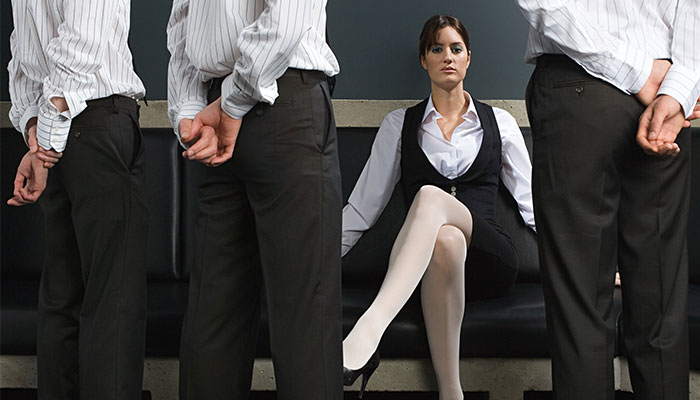Sexual harassment allegations that have surfaced in the legal profession highlight a deep-seated culture that exists in many industries that are hierarchical, male-dominated and often rely on connections for career advancement.

This culture creates an environment where sexual harassment can occur and where complaints are not made so that reputations and potential job opportunities are not ruined.
Following the allegations of sexual harassment against former High Court justice Dyson Heydon, the High Court immediately implemented the six recommendations put forward by an independent investigation.
However, the recommendations only deal with the symptoms of a much bigger problem. There is an urgent need for a deep cultural shift within the legal profession and other male-dominated fields considered high risk when it comes to sexual harassment and the mistreatment of female workers.
How masculine norms develop
Tackling toxic masculine cultures is a touchy subject and an ongoing challenge for organisations and professions.
Organisations use culture to socialise employees, which in turn establishes values and social norms that reinforce acceptable and unacceptable behaviours. However, organisational culture is often viewed as an abstract concept and associated with important workplace outcomes such as employee engagement and motivation.
More recently, researchers have begun to develop specific dimensions of organisational culture that foster or hinder workplace effectiveness.
Workers in this type of culture are expected to ‘show no weakness’, ‘put work first’, and are rewarded for showing off their endurance.
In findings of a project published in the Journal of Social Issues, researchers developed an organisational culture measure called ‘masculinity contest cultures’ to capture the masculine norms and values that are dysfunctional in a workplace context.
According to these researchers, masculinity contest cultures endorse stereotypical masculine traits that over time lead to masculine workplace norms. Workers in this type of culture are expected to ‘show no weakness’, ‘put work first’, and are rewarded for showing off their endurance (such as working longer hours), and endorse ruthless and winner-take-all competition among peers.

These norms are more prevalent in professions such as law where workers face strong competition and are at a high risk of failure.
Women and minorities pushed out, or opt out
The research found these masculine norms are detrimental for both the workplace environment and individuals who are targets. In short, masculine cultures contribute to productivity loss and poor organisational outcomes.
These cultures are more likely to put women and minorities in a vulnerable situation where they need to make hard decisions of whether to play the game or opt out.
Those who choose to play the game may be penalised for displaying masculine behavioural traits like anger or self-promotion. Hence, as long as an organisational culture promotes toxic masculinity, women and minorities are either pushed out or choose to op out.
Given the dysfunctional nature of masculine culture and associated costs such as the loss of talent and reputational damage, it is important for organisations to eliminate toxic masculine values and norms.
Steps to change a toxic culture
Here are some specific actions organisations can take:
- Implement a cultural shift that clearly outlines actions and steps to accomplish a set of objectives. When the goal is to eliminate toxic masculine norms, organisations need to examine not only their policies and practices, but also the visible and subtle behaviours and mindsets of leaders and employees, particularly towards women and minorities.
- Engage employees at various levels in difficult, yet constructive, conversations.
- Leadership makes all the difference as it serves as an important catalyst for change. Leaders must have the courage to publicly reject and call out harassment and toxic masculine behaviour in the workplace.
- Leaders need to be good role models to their subordinates by setting standards for what they expect from others. Good leaders take responsibility for their actions, particularly when they make a mistake, and inspire others to do the same.
- Leaders must be actively involved in supporting, promoting and implementing a fair, inclusive and productive workplace culture.
- Organisational policies play a critical role in transforming workplace culture. In addition to transparent and fair practices, policies need to establish mechanisms for ensuring they create a safe space for employees to voice their concerns.
Dr Raymond Trau is a Senior Lecturer with the Department of Management at Macquarie Business School and a member of the Health and Wellbeing Research Unit and Centre for Workforce Futures at Macquarie University. His research focuses on diversity and inclusion in the workplace.



